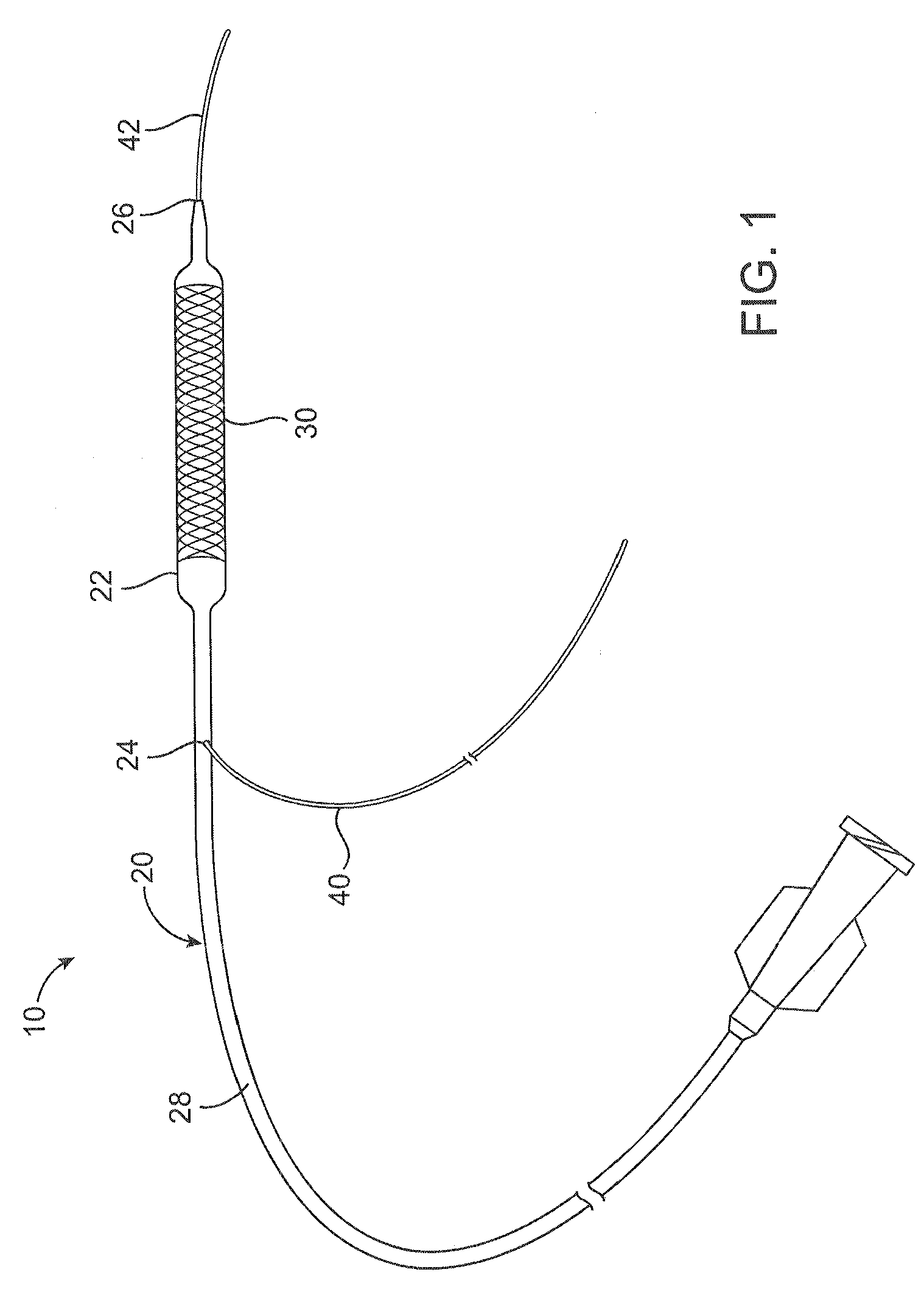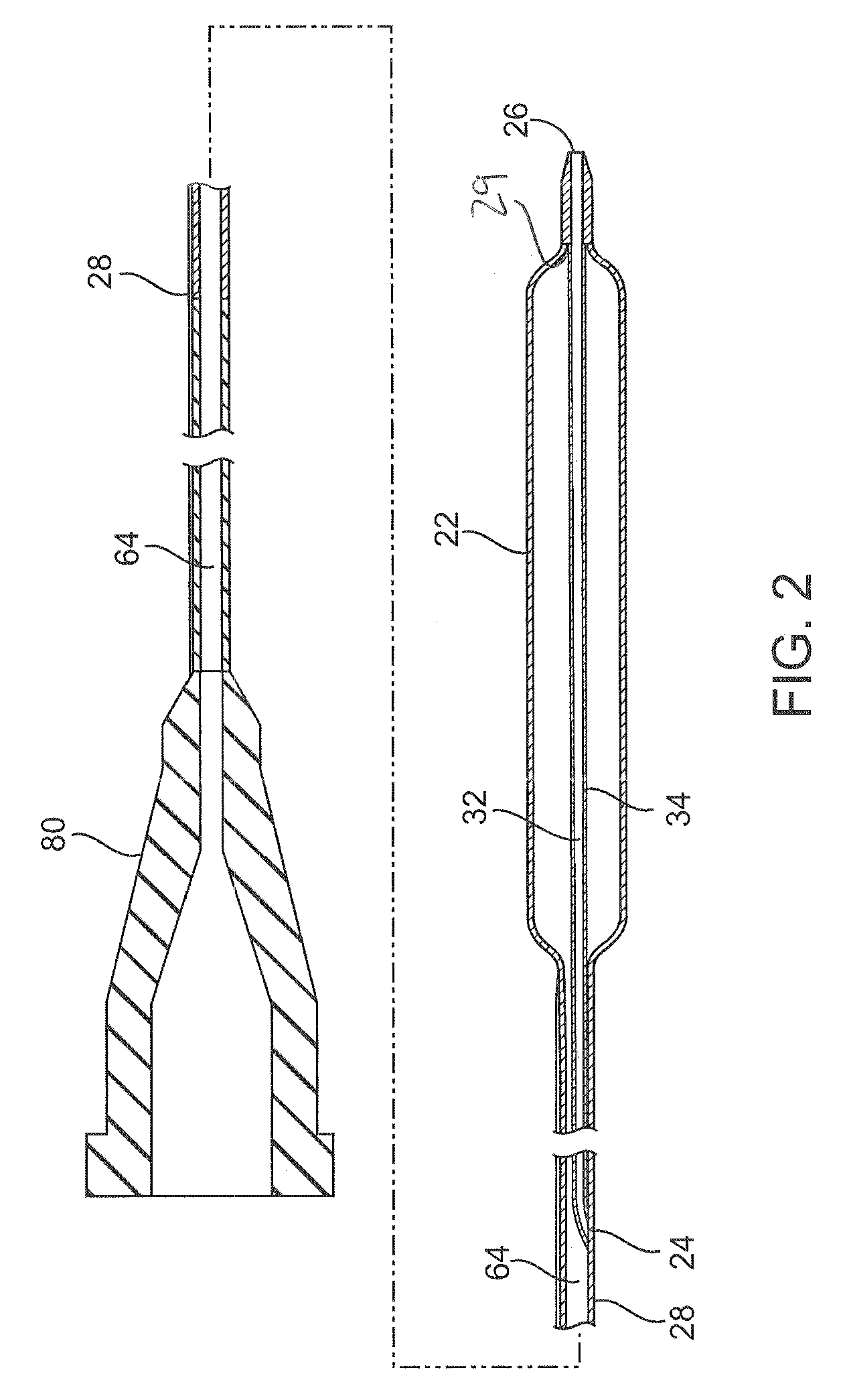Catheter components formed of polymer with particles or fibers
a technology of polymer and fibers, applied in the field of catheter components, can solve the problems of high surface friction of materials, higher surface friction of hdpe, and general friction, and achieve the effect of low surface friction and easy processing
- Summary
- Abstract
- Description
- Claims
- Application Information
AI Technical Summary
Benefits of technology
Problems solved by technology
Method used
Image
Examples
Embodiment Construction
[0016]A catheter system 10 comprises a catheter 20 according to an embodiment of the present invention and is shown in FIGS. 1 and 2. The catheter 20 can be a conventional catheter, such as an over-the-wire type catheter or, as shown, a rapid exchange type catheter. The catheter 20 comprises a guidewire lumen 32 through which a guidewire can extend. A proximal portion 40 of the guidewire can extend out of the catheter through a proximal guidewire port 24, or rapid exchange or RX port, that is proximal of a balloon 22, and a distal portion 42 of the guidewire can extend out of a distal guidewire port 26 distal of the balloon 22. The guidewire lumen 32 comprises a tubular member 34 (also referred to as a guidewire lumen or inner member) having an inner opening through which the guidewire 40 can extend. A catheter shaft 28 extends between a hub structure 80 at or proximate a proximal end of the catheter shaft and the balloon 22 at or proximate a distal end of the shaft. The catheter sh...
PUM
| Property | Measurement | Unit |
|---|---|---|
| size | aaaaa | aaaaa |
| size | aaaaa | aaaaa |
| size | aaaaa | aaaaa |
Abstract
Description
Claims
Application Information
 Login to View More
Login to View More - R&D
- Intellectual Property
- Life Sciences
- Materials
- Tech Scout
- Unparalleled Data Quality
- Higher Quality Content
- 60% Fewer Hallucinations
Browse by: Latest US Patents, China's latest patents, Technical Efficacy Thesaurus, Application Domain, Technology Topic, Popular Technical Reports.
© 2025 PatSnap. All rights reserved.Legal|Privacy policy|Modern Slavery Act Transparency Statement|Sitemap|About US| Contact US: help@patsnap.com



